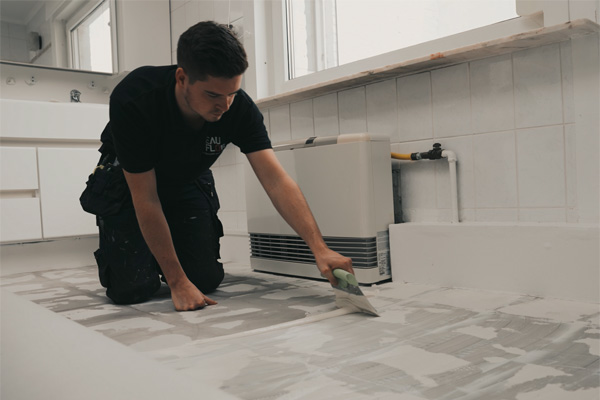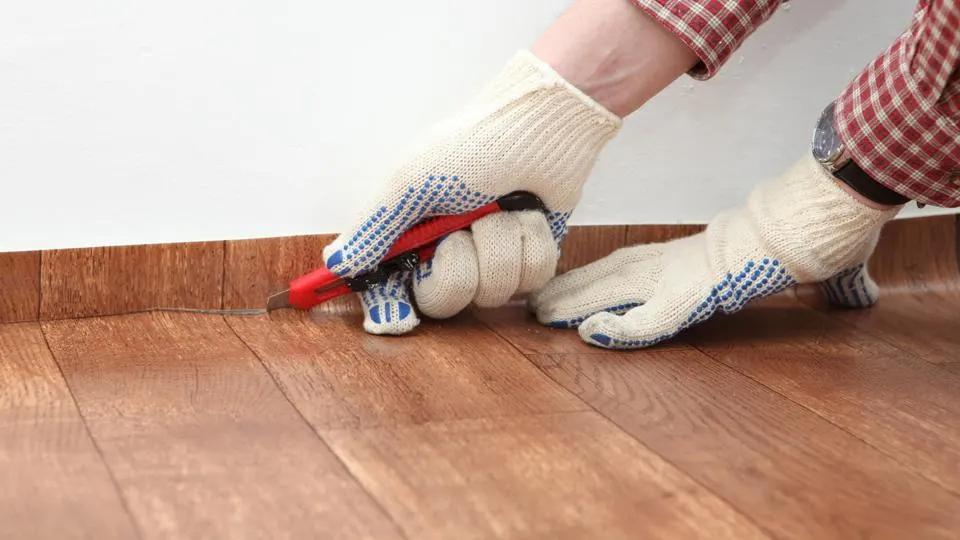Linoleum flooring, traditionally associated with kitchens and classrooms due to its resilience and easy maintenance, is breaking boundaries with its modern iterations tailored for versatility and style. This classic material is making unexpected appearances in places far beyond the common floor, offering both functional and aesthetic gains. It’s time to explore the creative deployments of linoleum flooring styles that showcase its full potential.
Linoleum in the Art World
One remarkable transformation is linoleum’s use in the art sector. Artists and craftsmen have adopted linoleum due to its malleable and forgiving nature, ideal for detailed linocuts and printmaking. This artistic application utilises the same qualities that make linoleum great for flooring—durability and the ease of carving—to create intricate and beautiful artworks. The resurgence of this art form has introduced linoleum to a new audience, proving its versatility and tactile appeal.
Crafting with Linoleum
Beyond professional art, linoleum is also gaining traction in DIY crafting circles. Its flexibility and ability to hold colour well makes it perfect for custom handmade items like coasters, wall art, and even jewellery. It’s a testament to linoleum’s adaptability and its potential to be repurposed in innovative ways that resonate on a personal level.
Architectural and Interior Design Innovations
In architecture and interior design, linoleum is stepping out of its comfort zone. Designers are employing linoleum in a variety of unconventional ways:
Linoleum Furniture
A fascinating trend is the use of linoleum in furniture design. Designers value the material for its texture and warmth, incorporating it into the surface of tables, desks, and cabinets. This application celebrates linoleum’s tactile quality and its extensive colour palette, offering a durable yet stylish alternative to wood or laminate.
Wall Coverings and Feature Walls
Moving up from the floor, linoleum is making its way onto the walls. In both residential and commercial spaces, linoleum wall coverings are being used to add texture, colour, and an element of soundproofing. Its capacity to resist moisture and mould also makes it suitable for high-humidity environments like bathrooms or kitchens, proving that linoleum can blend functionality with modern aesthetics.

Linoleum in Public and Commercial Spaces
The ease of maintenance and robustness of linoleum is being recognised by more than just schools and hospitals.
Transformative Retail Spaces
Retail environments are utilising linoleum to create immersive shopping experiences with vibrant floor designs that can guide traffic flow or highlight key products. The ability to custom print designs onto linoleum means that branding can be seamlessly integrated into the flooring, enhancing the retail narrative.
Innovative Exhibition Spaces
Museums and galleries are adopting linoleum for temporary or travelling exhibitions. Its ease of installation and removal makes it ideal for changing displays, and its softness underfoot provides a comfortable walking surface for patrons, helping to reduce fatigue during long visits.
Conclusion
The journey of linoleum from a practical flooring option to a versatile design material is a testament to its enduring attributes of durability, ease of use, and aesthetic versatility. By stepping out of the conventional roles and into more creative and unexpected applications, linoleum is demonstrating that it can offer much more to modern design than previously appreciated. Its evolution continues to inspire designers, artists, and homeowners to rethink how and where linoleum can be used, pushing the boundaries of traditional material applications in exciting new directions.




